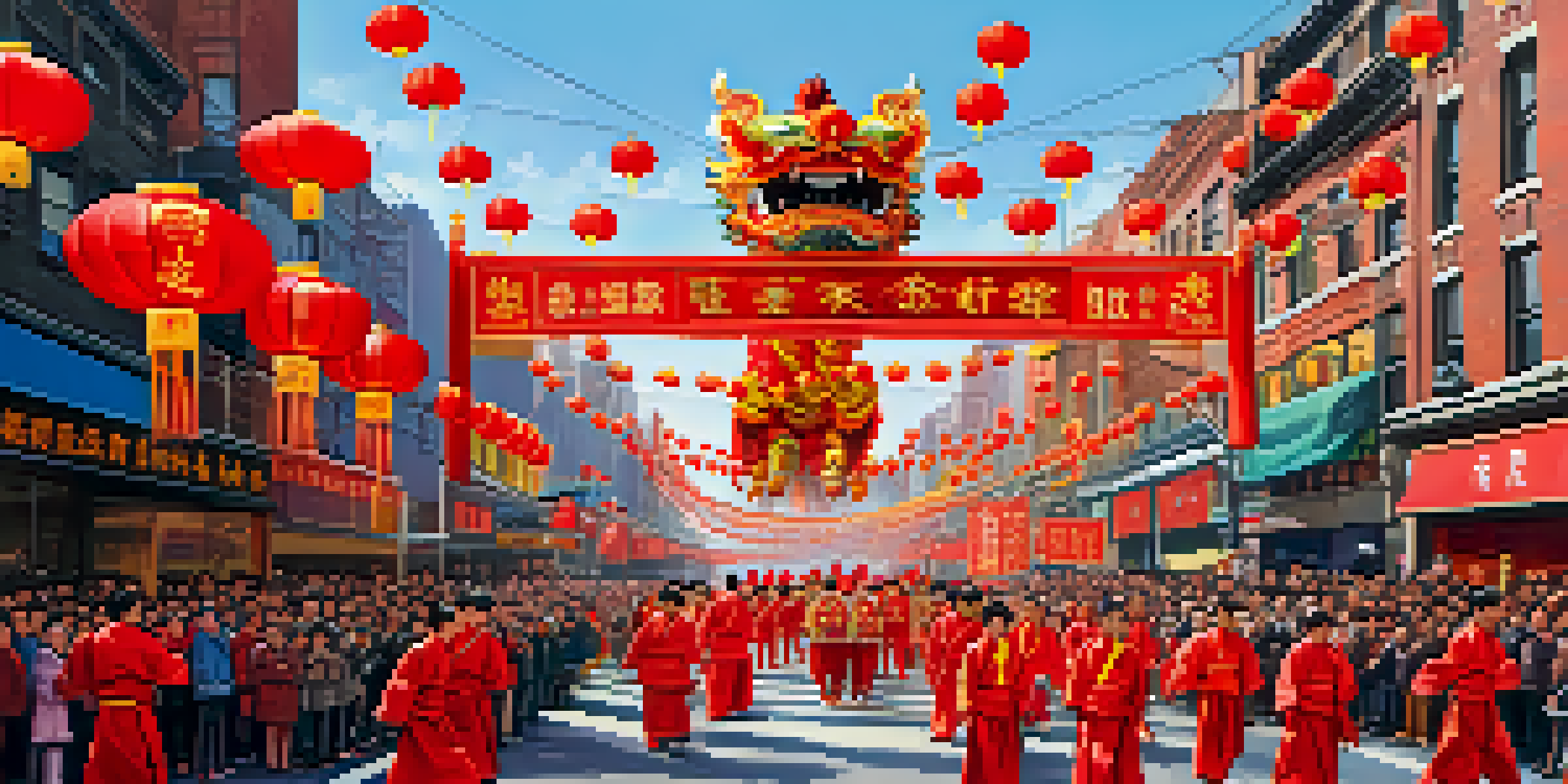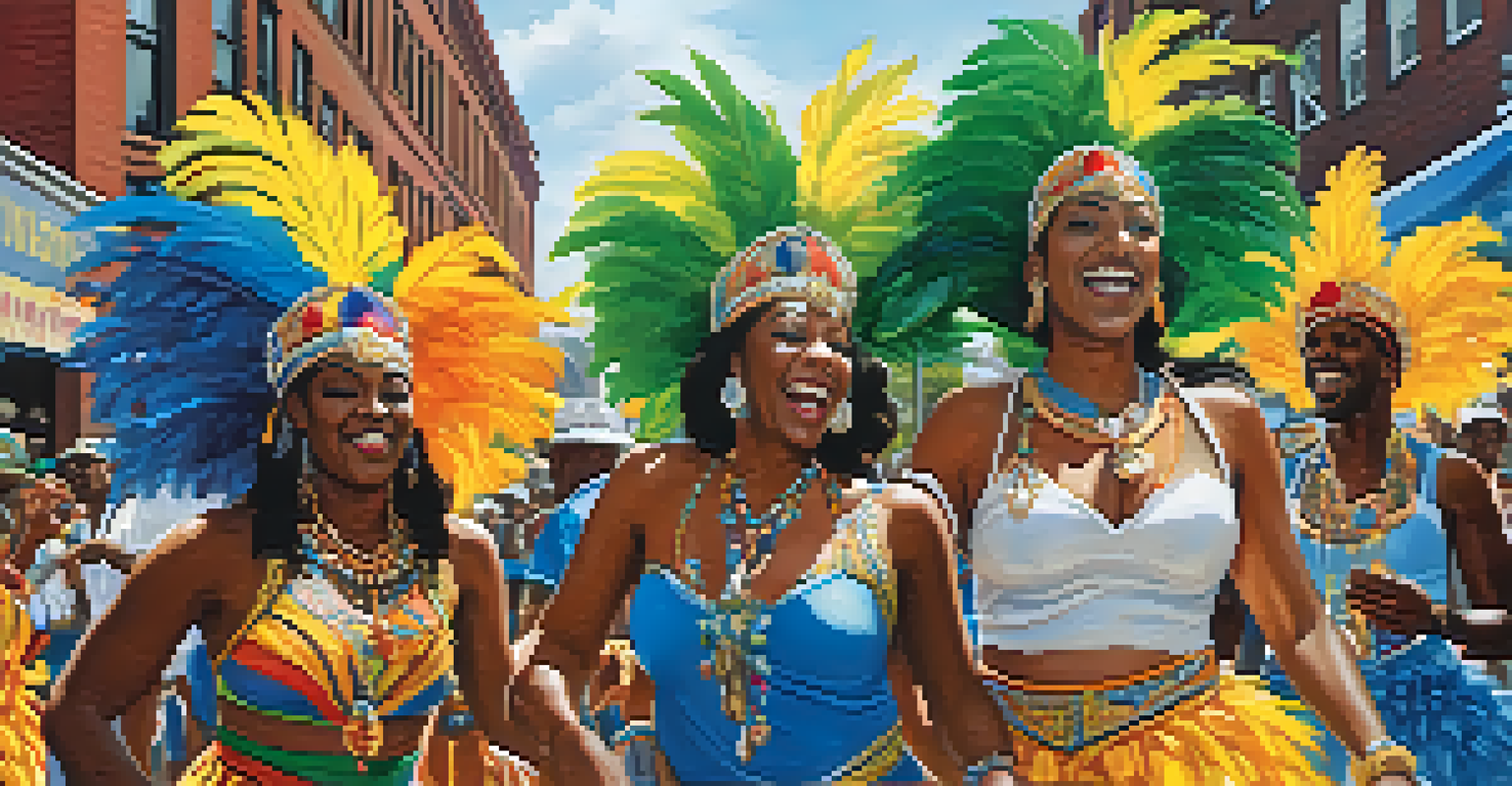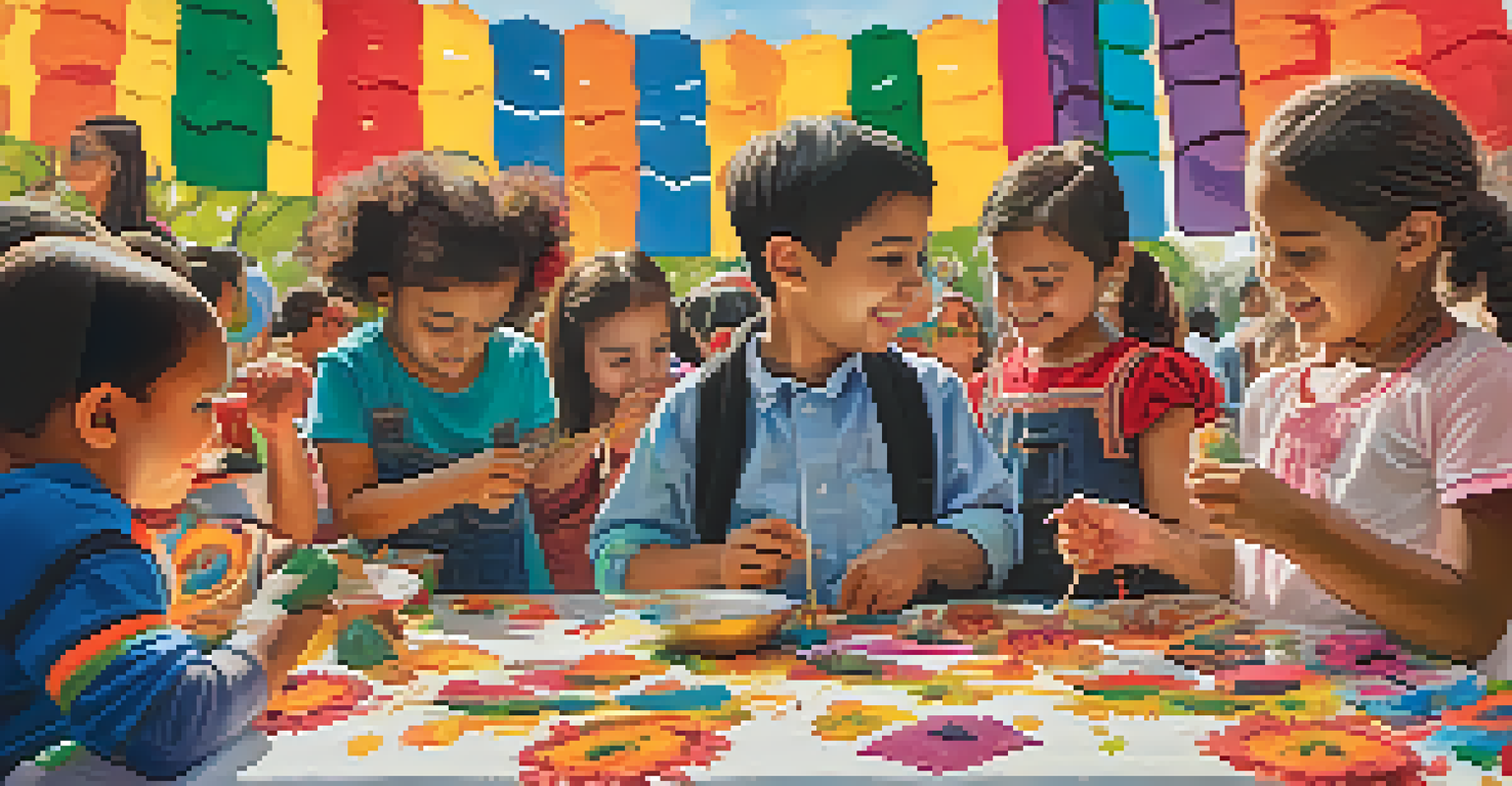Cultural Festivals: Celebrating Diversity in NYC

Understanding NYC's Cultural Tapestry Through Festivals
New York City is a melting pot of cultures, and this diversity is beautifully showcased through its many cultural festivals. These celebrations offer residents and visitors a chance to experience the rich traditions, foods, and art from around the world. They serve as a reminder that NYC is not just a city but a vibrant community enriched by various ethnic backgrounds.
New York City is a place where everyone is welcome to share their culture, and that is what makes it truly special.
Every year, millions flock to these festivals, which not only entertain but also educate. For instance, events like the West Indian American Day Carnival and the Lunar New Year Parade invite people to immerse themselves in the unique customs and practices of different cultures. This engagement fosters a deeper understanding and appreciation of the traditions that shape the city.
By attending these festivals, people can connect with others from diverse backgrounds, breaking down barriers and building meaningful relationships. It's a celebration of humanity, where everyone is invited to share in the joy of cultural exchange and collective celebration.
The Rich History of NYC's Cultural Festivals
Many of NYC's cultural festivals have deep roots in the history of immigration and community. As waves of immigrants settled in the city, they brought their unique customs and traditions, which evolved into the vibrant festivals we see today. For example, the Puerto Rican Day Parade, established in the 1950s, celebrates Puerto Rican heritage and has become a staple of NYC’s summer festivities.

These events often reflect the struggles and triumphs of the communities they represent. They serve not only as a celebration but also as a way to honor the ancestors and traditions that paved the way for future generations. This historical context adds depth to the festivities, reminding us of the rich narratives behind each celebration.
Cultural Festivals Unite NYC's Diversity
NYC's cultural festivals celebrate the city's rich diversity, allowing people to connect through shared traditions and experiences.
Moreover, these festivals are a testament to the resilience and strength of communities in NYC. They highlight how cultural pride can thrive even in the face of adversity, showcasing the importance of preserving traditions while creating a sense of belonging.
Experiencing Food at NYC's Cultural Festivals
One of the most delicious aspects of cultural festivals in NYC is the food. Each festival offers a unique culinary journey, allowing attendees to indulge in traditional dishes from different cultures. From jerk chicken at the West Indian American Day Carnival to dim sum at the Lunar New Year Festival, the flavors are a feast for the senses.
Cultural festivals are not just celebrations; they are a profound expression of community and identity.
Food vendors play a crucial role during these celebrations, often showcasing family recipes passed down through generations. This not only highlights the culinary arts but also tells a story of cultural heritage. Sampling a variety of dishes becomes a way for festival-goers to experience and appreciate the diversity of the city’s population.
Additionally, food brings people together, sparking conversations and connections. Sharing a meal can break down barriers, making it easier to bond with someone from a different background. In this way, culinary experiences at festivals become a vital part of the cultural exchange that NYC embodies.
The Role of Music and Dance in Celebrating Culture
Music and dance are integral to cultural festivals in NYC, providing an energetic backdrop to the celebrations. Each festival showcases traditional music and dance forms, allowing attendees to engage with the culture on a deeper level. For instance, the Caribbean Carnival features vibrant calypso and soca music that gets everyone dancing.
The rhythm of music creates a sense of unity and joy among festival-goers, inviting people of all ages to participate. Dance performances often tell stories, reflecting the history and traditions of the cultures represented. These performances not only entertain but also educate, allowing spectators to appreciate the artistry involved.
Food as a Cultural Connector
The unique culinary offerings at festivals serve not only as a delightful experience but also as a way to appreciate and understand different cultures.
Moreover, music and dance act as a universal language that transcends cultural barriers. They create an atmosphere of celebration where everyone can join in, fostering community spirit and collective joy. Through these art forms, festivals become lively gatherings that celebrate the beauty of diversity in a shared space.
Family-Friendly Activities at Cultural Festivals
Cultural festivals in NYC are designed to be inclusive, offering a wide range of family-friendly activities. From arts and crafts stations to storytelling sessions, there’s something for everyone to enjoy. These activities not only entertain but also educate children about different cultures in a fun and engaging way.
For example, many festivals host workshops where families can learn traditional crafts, such as origami during the Japanese Street Festival or mask-making at the Día de los Muertos celebration. These hands-on experiences encourage creativity and foster a sense of connection to the culture being highlighted.
Additionally, children's performances often take center stage, showcasing young talent and providing a platform for cultural expression. This inclusion ensures that the next generation understands the importance of cultural heritage while having fun, making the festivals a memorable experience for families.
Celebrating LGBTQ+ Cultures in NYC Festivals
New York City is famous for its vibrant LGBTQ+ community, and many cultural festivals celebrate this diversity. Events like Pride Month and the NYC Pride March highlight not only LGBTQ+ identities but also the intersectionality of different cultures. These celebrations emphasize the importance of love, acceptance, and community.
The blend of LGBTQ+ themes with cultural festivities creates a unique atmosphere that fosters inclusivity and joy. For example, the Queens Pride Parade is a celebration of both LGBTQ+ pride and the diverse cultures that inhabit the borough. It showcases the beauty of representation and solidarity across various communities.
Festivals Boost NYC's Economy
Cultural festivals significantly contribute to NYC's economy by attracting visitors and supporting local businesses and artisans.
Moreover, these festivals serve as a platform for advocacy and awareness, addressing important issues within the LGBTQ+ community. They remind us that celebration goes hand in hand with activism, ensuring that everyone's voice is heard and valued.
The Impact of Cultural Festivals on NYC's Economy
While cultural festivals are a celebration of diversity, they also play a significant role in NYC's economy. These events attract thousands of visitors, boosting local businesses such as restaurants, shops, and hotels. The economic impact is substantial, as festivals create jobs and generate revenue for the city.
Additionally, cultural festivals often highlight local artisans and vendors, providing them with a platform to showcase their products. This support for small businesses fosters a sense of community and encourages the growth of local economies. By promoting cultural pride through commerce, these festivals contribute to the overall vibrancy of NYC.

Moreover, the investment in cultural festivals reflects the city’s commitment to diversity and inclusion. Supporting these events sends a message that celebrating various cultures is not just a social initiative but also an economic priority. This relationship between culture and economy makes NYC a unique and thriving hub of diversity.